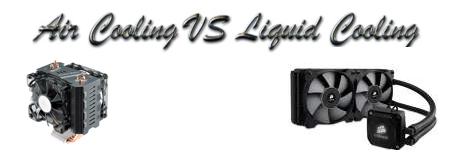Posts Tagged ‘computer cooling upgrade’
Computer Air Cooling vs Liquid Cooling

 Computer repair miami – Air Cooling vs liquid Cooling.
Computer repair miami – Air Cooling vs liquid Cooling.
The parts inside most computers are cooled by air moving through the case. The CPU is no exception. However, because of the large amount of heat produced, the CPU must have proportionately the largest surface area exposed to the moving air in the case. Therefore, the heat sinks on the CPU are the largest of any inside the computer. This fan often blows air down through the body of the heat sink to force the heat into the ambient internal air where it can join the airflow circuit for removal from the case. However, the latest trend, in support of high-end processors, is a redesign of the classic heat sink. The heat sink extends up farther, using radiator-type fins, and the fan is placed at a right angle and to the side of the heat sink. This design moves the heat away from the heat sink imme- diately, instead of pushing the air down through the heat sink. CPU fans can be purchased that have an adjustable rheostat to allow you to dial in as little airflow as you need, aiding in noise reduction but potentially leading to accidental overheating.
It should be noted that the highest-performing CPU coolers use copper plates in direct contact with the CPU. They also use high-speed and high-CFM cooling fans to dissipate the heat produced by the processor. CFM is short for cubic feet per minute, an airflow measurement of the volume of air that passes by a stationary object per minute. Most new CPU heat sinks use tubing to transfer heat away from the CPU. With any cooling system, the more surface area exposed to the cooling method, the better the cool- ing. Plus, the heat pipes can be used to transfer heat to a location away from the heat source before cooling. This is especially useful in small-form factor cases and laptops, where open space is limited.
With advanced heat sinks and CPU cooling methods like this, it is important to improve the thermal transfer efficiency as much as possible. To that end, cooling engineers came up with a compound that helps to bridge the extremely small gaps between the CPU and the heat sink, which avoids superheated pockets of air that can lead to focal damage of the CPU. This product is known as thermal transfer compound or simply thermal compound alternatively, thermal grease or thermal paste) and can be bought in small tubes. Single-use tubes alleviate the guessing involved with how much you should apply. Watch out, though; this stuff makes quite a mess and doesn’t want to come off your fingers very easily. Apply the compound by placing a bead in the center of the heat sink, not on the CPU because some heat sinks don’t cover the entire CPU package. That might sound like an issue, but some CPUs don’t have heat-producing components all the way out to the edges. Some CPUs even have a raised area directly over where the silicon die is within the pack- aging, resulting in a smaller contact area between the components. You should apply less than you think you need because the pressure of attaching the heat sink to the CPU will spread the compound across the entire surface in a very thin layer. It’s advisable to use a clean, lint-free applicator of your choosing to spread the compound around a bit as well, just to get the spreading started. You don’t need to concern yourself with spreading it too thoroughly or too neatly because the pressure applied during attachment will equalize the compound quite well. During attachment, watch for oozing compound around the edges, clean it off immediately, and use less next time. We replace all NEW CPU ICORE with Liquid cooling cooling and air for best performance.
